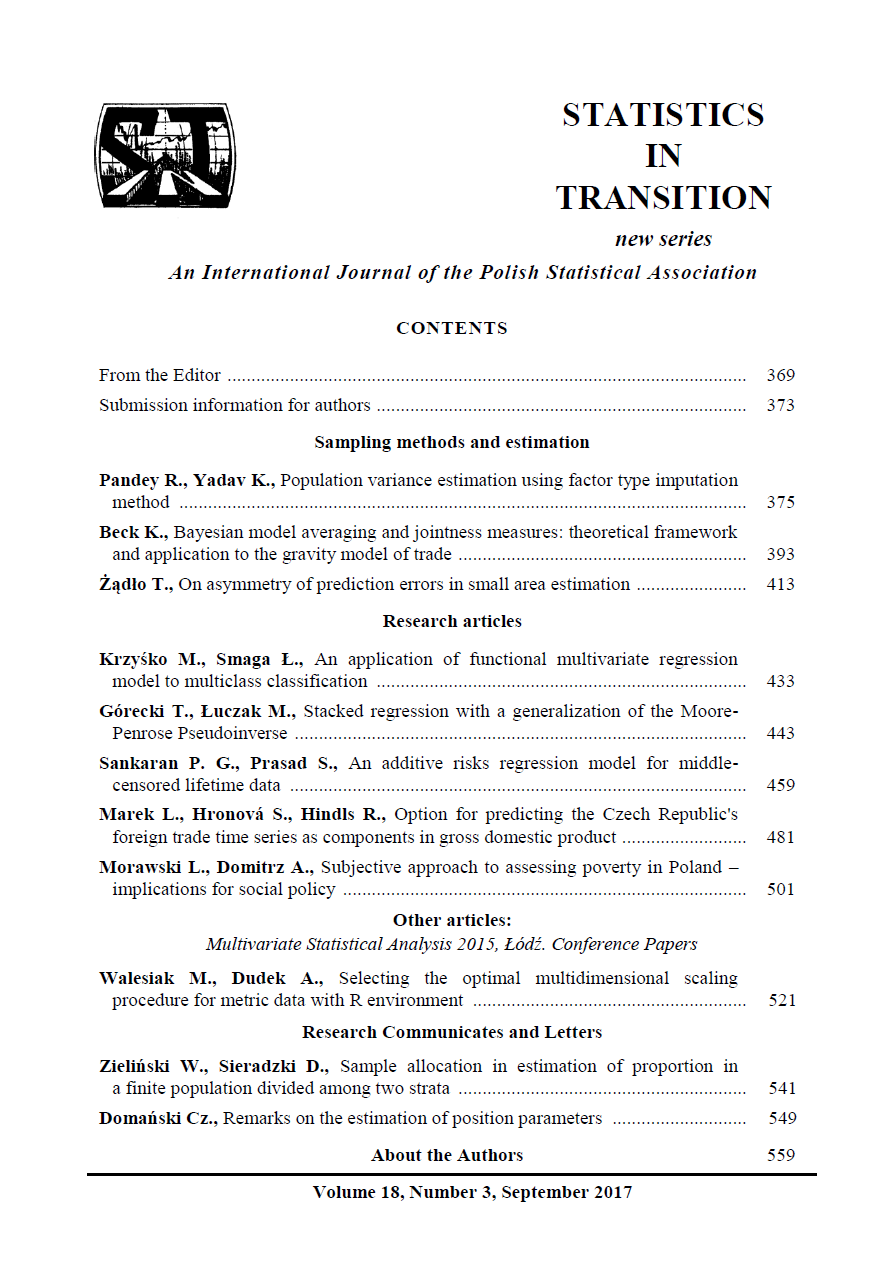ARTICLE
ABSTRACT
The problem of estimating a proportion of objects with a particular attribute in a finite population is considered. The classical estimator is compared with the estimator, which uses the information that the population is divided among two strata. Theoretical results are illustrated with a numerical example.
KEYWORDS
survey sampling, sample allocation, stratification, estimation, proportion.
REFERENCES
ARMITAGE, P., (1947). A Comparison of Stratified with Unrestricted Random Sampling from a Finite Population, Biometrika, 34, 3/4 , pp. 273–280.
BRACHA, CZ., (1998). Metoda reprezentacyjna w badaniach opinii publicznej i marketingu. PWN, Warszawa.
COCHRAN, W. G., (1977). Sampling Techniques (3rd ed.), New York: John Wiley.
NEYMAN, J., (1934). On the two different aspects of the representative method:The method of stratified sampling and the method of purposive selection, Journal of the Royal Statistical Society, 97, pp. 558–606.
SIERADZKI, D., (2016). Estimation of proportion in finite population divided into two strata, master thesis, WZIiM SGGW Warszawa (in polish).
ZIELINSKI, W., (2010). Estymacja wskaźnika struktury, Wydawnictwo SGGW, ´Warszawa.
ZIELINSKI, W., (2016). A remark on estimating defectiveness in sampling acceptance inspection, Colloquium Biometricum, 46, pp. 9–14
